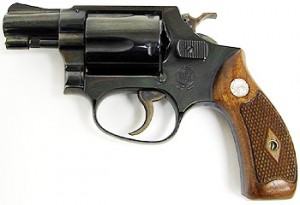If anyone is really interested, you can use Newton’s stuff from 400 years ago to understand how your gun works. We used it to get us to the moon back in the 60’s, we use it on the rockets and guns we’re designing today. If you don’t care to know, don’t worry about it, keep believing whatever makes you happy! No big deal.
For example, how long does your bullet remain in your gun barrel, what kind of acceleration does the bullet experience, how much force is being applied to the slide or frame?
This kind of stuff is REAL important if you’re designing things like rocket mechanisms or artillery fuses or proximity detonators.
Not real easy to effectively transmit mathematical concepts in a forum format, but we can try. I’m going to ignore the contribution of the unburned powder and gases exiting the barrel with the bullet.
We’ll call the starting position of the bullet the zero of our coordinate system, so X(initial) = 0. We’ll abbreviate it as Xi cause I’m lazy. That means Xi = 0.
V(initial) is the starting velocity. We’ll call that Vi. For a bullet in a gun, it’s initial velocity is 0. So Vi = 0.
We’ll call the last position we consider, the end of the barrel, X(final). I’ll abbreviate that as Xf.
T = time in seconds.
T^2 means “T raised to the second power” or "T squared" or “T x T”.
X = position in inches.
V = velocity in feet per second.
A = acceleration in feet per second squared (fps^2).
The basic motion equation in terms of time is:
Xf = Xi + V x T + (A x T^2) / 2
If you want more on this basic motion equation, you can go here:
http://en.wikipedia.org/wiki/Equations_of_motion
Introductory calculus teaches us that the first derivative of position is velocity, and the first derivative of velocity and the second derivative of position is acceleration (I’m not going into calculus for you).
So Velocity = Vi + Acceleration x Time, or
Vf = Vi + A x T
We’ll look at a typical .45 caliber 1911. First thing we have to do is get everything into common units.
Bullet weight = 230 grains = 230/7000 pounds = .033 pounds = .001025 slugs (slug is mass unit in english system).
Barrel length = 5 inches = 5/12 feet = .417 feet
Bullet velocity when it exits the barrel at 5 inches = 830 feet per second.
Now we just use the basic motion equation:
Xf = Xi + Vi x T + (A x T**2) / 2
Put in our 1911 values that we know:
.417 = 0 + 0 x T + (A x T**2) / 2 or
.417 = (A x T**2) / 2 (NOTE – This will be EQ1)
Notice that we have 2 unknowns (A and T) but so far only one equation. From basic algebra we know that we need as many equations as unknowns if we hope to solve them.
This is where we use the rest of the stuff we know and the velocity equation:
Vf = Vi + (A x T)
We know Vf (Velocity final) is 830 fps. We know Vi (Velocity initial) is 0, so
830 = 0 + (A x T)
Since we loved algebra, we solve for A in the above equation and find
A = 830 / T (NOTE – This will be EQ2)
Now we can cleverly plug the above relationship back into our basic motion equation EQ1, replacing A with 830 / T.
.417 = (830/T) x (T**2) / 2
Simplifying this (basic algebra again) gives
.417 = 415 x T
Now we solve for T:
T = .417/415 = .0010048 seconds
In other words, T is right at 1/1000 of a second. This is the total time that the bullet is accelerating, which is the time that the bullet is in the barrel.
Since we now know T, we can easily solve for A from EQ2:
A = 830/ T = 830 / .001 = 830,000 feet per second squared.
Acceleration due to gravity = 32.2 fps**2, so our bullet is experiencing:
830,000 / 32.2 = 25776.4 G’s as it goes down the barrel.
Kind of important to know if you want to hang some electronics on your bullet. They better be able to handle more than 25,000 G’s.
How much force is the bullet and therefore the locked together barrel/slide seeing?
We know that the force from the bullet equals its mass times acceleration, and we know that for every force there is an equal and opposite reaction (that Newton stuff again).
So the force delivered to the locked together barrel/slide from the bullet is:
F = M x A
F = mass of bullet x acceleration of bullet
F = .001025 x 830,000 = 851 pounds




